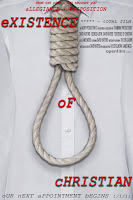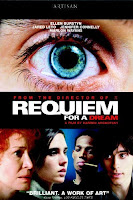For the year thirteen media blog, Mr. Sheriff (head of the media department) said that we should make this year’s blog like a journey. He told us to say how we had evolved from the process from the beginning of the project to the very end. This is to re iterate that journey, and what it has done for our media group.
This whole journey really began at the end of the year 12 media blog, when we had to complete the beginning 2 minutes of a thriller genre film. Back then the media group consisted of David Huxford, Taylor Gladwin, Bradley Hart and Tom Winn. We were initially known as ‘Thumbman Productions back then. This was what we were able to base a lot of this year’s blog stuff on (because we had already done it before). But this year was different, because Brad and Tom Winn wanted to do a music video instead of a short film; me and Taylor partnered ourselves with Dave Waters and James Moss. These two were partnered with Justine Carron and Rachael McClure, and were collectively known as ‘Angry Productions’.
At the beginning of this task, once we had gotten allot he groups sorted out and everyone was ready to go, we researched a lot of short films with Mr. Marshall. Because unlike last year our short film didn’t have one set genre, we researched many films of different genres. Many of these films include ‘The Black Button’, ‘Doodlebug’ and ‘Schwarzfahrer’ (personally research). On top of this, we watched short films that had been created by last year’s year 13 students.
Because ‘Thumbman Productions’ was the group that gained the best mark in the task last year (with an overall score of 92/100), me and Taylor thought our selves rather lucky to partner ourselves with two students that received A grades in both the exam and the coursework just as we did (after Dave Huxford’s re-sit). But because of the huge success of last year from both Thumbman Productions and Angry Productions, we wanted to beat the group that got the best grade last year for the same task, and that group was the ‘Pete McLaughlin group’. There overall score for both blog and video was 93/100 (and 6 marks had been deducted from the scores before this grade was published). This gave us great motivation to get this blog to be as best as it possibly be. However, it didn’t start out as we had planned.
The first thing we planned to get started on (much like every other group in the year) was the controlling idea of our short film. The idea being that once we had a solid idea of what the film would be based on, the actual ideas of what the film would have in it would evolve with rapid succession. But, we couldn’t think of an idea. We developed many ideas of a good short film that was a good genre; as well have challenging themes so the audience could enjoy the experience even more. But as we continued to think, we couldn’t think of a controlling idea and the longer we thought, the more groups that thought of their controlling idea and got cracking on with storyboarding their final idea. Because we took so long getting our controlling idea, we didn’t get our storyboarded idea completed until the end of October.
Getting started on the blog was also not as simple as we all had originally intended. We had accepted that we had to spend time researching short films and what we were to put on the blog, but because of the time it took to get our idea set in stone, other blogs had gotten up to 10 blog posts, and we had just managed to begin our blog with an introduction. We tried to begin with what we had done last year and how it was going to be the bass of what we plan to do this year. But rather miraculously, we’d managed to get our act together enough to get more blog posts up to catch up with the other groups in the year.
As one blog post turned to ten, and ten turned to many more, we thought our group was in the driver’s seat. Wit a lot of our research done, we still hadn’t completed the main concept of our coursework, the storyboard with our final idea on it. So as we had basically all of our research completed, we spent the remained of our time working on our soon to be completed storyboard. With the storyboard finally completed after a strenuous amount of energy and time doing this task, we had all felt it worth it when w al felt like we had given ourselves a very good idea for a 5 minutes short film, which would give us a really big chance of beating last year’s best blog.
But it was around this point in the task where stress takes over the body, and this lead to many arguments about the blog was being unleashed on the group. The main problem was the fact that some people were getting more blog posts than others, and group members were complaining that they weren’t getting enough, and this would lead them to getting not a good enough grade at the end of this project. These arguments lasted through the media lessons whilst we were planning, but these eventually cooled over and things were back on track to completing this task.
With time running out on us, and everyone else was finishing up their final products, we left the editing up to Dave Waters because he had the same editing software as the school, so when us as a group couldn’t edit the product, he could. With the final week of the project ahead of us as we headed past the Christmas period, we decided to put ourselves into full throttle to get this done before the deadline. But the relentlessness of the project kept pushing our buttons, and the final two days proved to be the biggest push to finish we’d had so far.
Towards the end after the video had been edited, we needed a trailer to encourage our films success through viral marketing. But due to running out of time, we couldn't make one for our finished product. However, this wasn't a massive blow as all short films don't have trailers. But though it would have been nice to have made one, the process did teach us all to be more time efficient as well as to get things done earlier to make room for things such as the trailer.
But alas, after 4 months of thinking, analysing, processing, filming, blogging, arguing and breathing one heavy sigh of relief, we (as a group) are confident enough to say we are finished the A2 media coursework. But after this whole process, the journey from the beginning to the end has played a key role in this entire project. It has not only allowed us to bond as a team, but also it taught us lessons about how to organise our time better and how to work better as a cohesive unit. However, the few of us that wish to go into a field that requires this kind of ability, we will be able to look back at this journey and say that this was a significant part of what every film, advert and video that we create from here on in. But a small part of us are sad that this project is over, with the ability to leave lesson to go round someone’s house and film to create something that could be your claim to fame is saddening, but once we receive the grade that we hopefully deserve, we’ll know that the journey from sufferers to successes would have been worth it all.











































